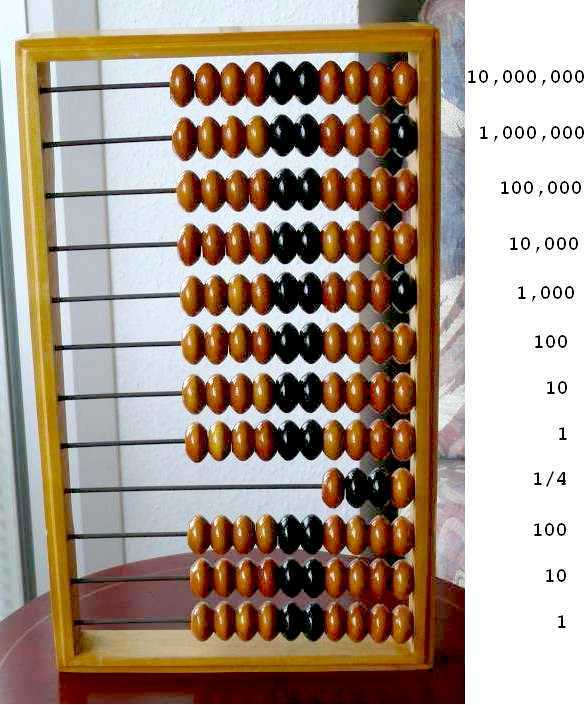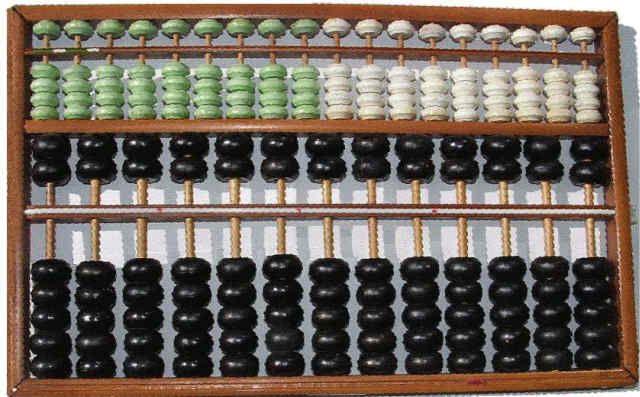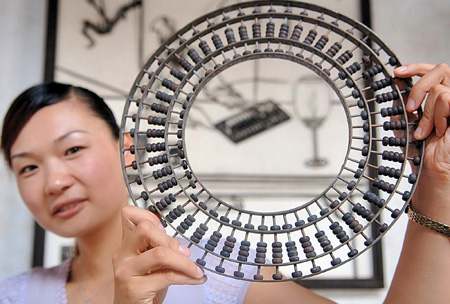The Roman abacus shown above was 'pocket-sized' (did togas even have pockets?) and made up of rounded dumbell-shaped beads sliding in vertical slots. The rightmost two columns are non-decimal and devoted to Roman ounces (twelve ounces in a Roman pound) and fractions thereof. The other columns are organized as orders of ten, operating in the same manner as using the Japanese Soroban -- the lower-deck beads count as one unit, while each bead in the upper deck counts as five.
The Romans were greatly hindered by their awkward numeral system and lack of the zero concept. However, this Roman abacus demonstrates that they did count by orders of ten and made use of zeros implicitly. The Romans performed calculations on the abacus or counting tablet in this familiar fashion, and only after the result was obtained was it recorded in Roman numerals as a final step.
 Russian Abacus, or Schoty (source ebay)
Russian Abacus, or Schoty (source ebay) The Russian abacus, or Schoty (in cyrillic: счёты), uses lateral rods with ten beads per rod. The beads are colored in a way that evokes the ten digits of your hands when held with palms away -- the two dark beads (thumbs) are in the middle with four light beads (fingers) on either side. An additional dark bead on the right indicates the thousand and million rod. The 4th rod holds four beads, traditionally used for quarter rubles.
(Note: you might also enjoy a look at the amusing and surprising
 Lee Kai-Chen (of Taiwan) 'Improved' Abacus (more info)
Lee Kai-Chen (of Taiwan) 'Improved' Abacus (more info)
The rare and beautiful Lee Kai-Chen Improved Abacus includes an additional top mounted sub-abacus for performing intermediate operations in complex calculations.
 Round Bagua (the Eight Diagrams) Abacus, or Circular Suanpan, Ming Dynasty (1368-1644)
Round Bagua (the Eight Diagrams) Abacus, or Circular Suanpan, Ming Dynasty (1368-1644)
source: ChinaDaily